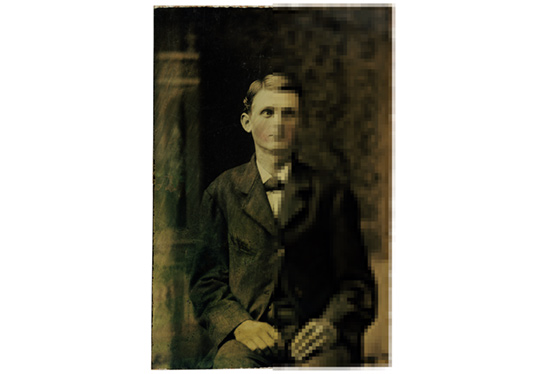Analog, Digital, and the Object

Is there anything that has not been said about the analog-vs.-digital debate? With every passing day, the debate looks slightly sillier, as digital photography is firmly replacing analog photography. Just the other day there was another report about plummeting film sales. Those numbers are dominated by “amateurs” - people who take their snapshots now with their cell phones or digital point-and-shoot cameras. But of course, there are many who still shoot film (incl. me) and will continue to do so (at least as long as it’s possible). Analog photography is here to stay in the realm of fine-art photography. So what’s left to talk about? (more)
I’ve always thought that in terms of what you get there is a clear and obvious difference: Analog photography gives you objects, digital photography doesn’t.
You can, of course, print a digital photo, and then you get your object. This is where analog and digital photography then have one thing in common: A bad print ruins the image, regardless of whether it’s a badly produced silver-gelatin print, c-print, inkjet print, or whatever else. Of course, an inkjet print does not look like a c-print, but why would it? Why should it? Each type of print has its own characteristics, and comparing them usually doesn’t make so much sense.
But most digital photographs “live” on computers (or computer-based gadgets such as an iPhone). So there is no object. Or so I thought.
The other day, I asked myself whether that’s really true. Is there no object in digital photography? We humans have been dealing with objects, trying to get certain objects, for thousands and thousands of years. It’s a bit amazing to entertain the thought that it would take us just a few years to give all that up. Suddenly we’re supposed to be happy without objects (while we know that advertizing and politics still happily manipulate our reptilian brain)?
I watched a commercial for an iPad the other day - I was too lazy to switch channels because of the heat - and I realized that we are still obsessed with the object. It’s just a different object. All that talk about digital photography, about ebooks and images on the various gizmos people use - it’s all based on objects: People love their iPhones or iPads! In fact, you could argue that Apple, the computer maker, has (re-)built their whole brand around the cult of the object.
So our obsession with objects is not gone. It’s only gone from photography (at least to some extent). Of course, the tactile experience of holding a photobook and an iPad is not the same - but why should it? When we hold an iPad to look at photographs we know that we are not holding a book. We don’t expect it to feel or smell like a book.
What I’m after here really is the following: I could be mistaken, but some points still being made about analog or digital are really not about photography. If you think that the object is what differentiates a photobook from an ebook, then - I think - you’re actually wrong. You’re just dealing with different objects (just watch a photobook fan and someone obsessed with their iPad treat their beloved objects).
But we also need to be a bit careful about applying criteria clearly taken from one realm and applying it to the other one. Historically, analog photography came before digital photography. But that does not mean that we have to judge digital photography based on the criteria developed for analog photography.
So, again, it’s all about the images. The object - that might just be a red herring. We’re still obsessed with those. We’ll do anything to get those. It’s just different objects now.
And let’s face it, the fact that the object has been taken out of the equation - at least to some extent - is rather liberating for photography. It should not be used as an excuse to produce bad objects (prints). But when there are no (direct) objects - as in the case of ebooks or images on a website - there is a lot to be gained, ease of dissemination being one of the most obvious things.
 By
By